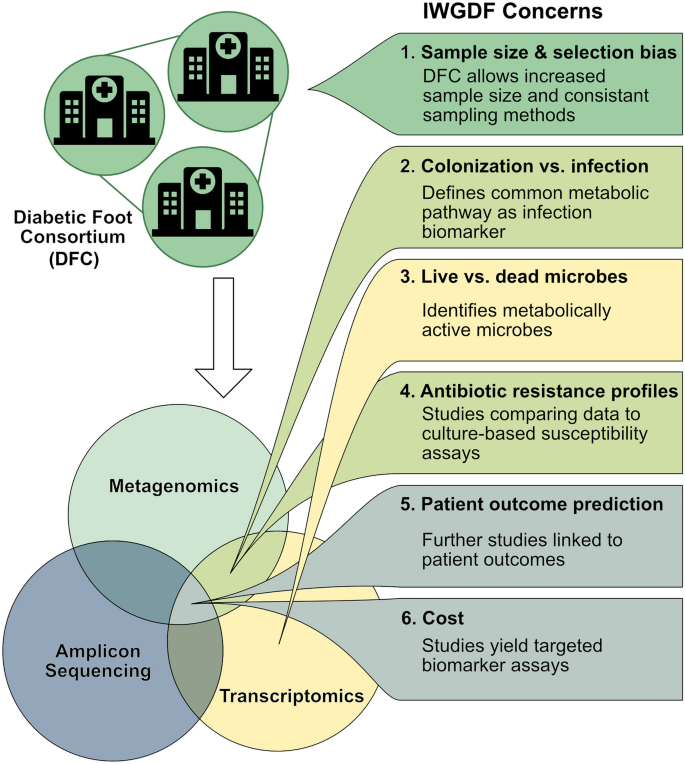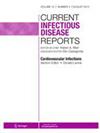下一步:用新一代分子测定法研究糖尿病足感染
IF 3.1
4区 医学
Q2 INFECTIOUS DISEASES
引用次数: 0
摘要
2019年,糖尿病足国际工作组就使用分子微生物技术常规诊断糖尿病足溃疡感染提出了6个问题。本综述的目的是评估解决这些问题的当代证据,并描述分子微生物学检测继续发展的有希望的途径。自2019年以来,对糖尿病足溃疡样本进行宏基因组和元转录组研究的可行性已经得到证实。然而,这些初步研究使用了小样本,考虑到选择偏差。我们等待更大规模的纵向研究,可能使用最近成立的糖尿病足联盟,以确定与感染和患者预后相关的微生物群。这些结果如何转化为临床诊断需要进一步澄清。高通量分子微生物学技术尚未准备好作为临床一线诊断。然而,从扩增子测序到宏基因组和亚转录组研究的转变有可能显著加速检测的发展,这可能会对患者护理产生有意义的影响。本文章由计算机程序翻译,如有差异,请以英文原文为准。

Next Steps: Studying Diabetic Foot Infections with Next-Generation Molecular Assays
Abstract Purpose of Review In 2019, the International Working Group on the Diabetic Foot voiced six concerns regarding the use of molecular microbiology techniques for routine diagnosis of infection complicating diabetic foot ulcers. The purpose of this review is to evaluate contemporary evidence addressing each of these concerns and describe promising avenues for continued development of molecular microbiology assays. Recent Findings Since 2019, the feasibility of conducting metagenomic and metatranscriptomic studies on diabetic foot ulcer samples has been shown. However, these preliminary studies used small samples with concerns for selection bias. We await larger-scale, longitudinal studies, potentially using the recently formed Diabetic Foot Consortium, to identify microbiome profiles associated with infection and patient outcomes. How these results would translate into a clinical diagnostic requires further clarification. Summary High-throughput molecular microbiology techniques are not yet ready for clinical adoption as first-line diagnostics. However, moving from amplicon sequencing to metagenomic and metatranscriptomic studies has the potential to significantly accelerate development of assays that might meaningfully impact patient care.
求助全文
通过发布文献求助,成功后即可免费获取论文全文。
去求助
来源期刊

Current Infectious Disease Reports
INFECTIOUS DISEASES-
CiteScore
6.70
自引率
0.00%
发文量
19
期刊介绍:
This journal intends to provide clear, insightful, balanced contributions by international experts that review the most important, recently published clinical findings related to the diagnosis, treatment, management, and prevention of infectious disease.
We accomplish this aim by appointing international authorities to serve as Section Editors in key subject areas, such as HIV/AIDS, sexually transmitted diseases, tropical and travel medicine, and urinary tract infections. Section Editors, in turn, select topics for which leading experts contribute comprehensive review articles that emphasize new developments and recently published papers of major importance, highlighted by annotated reference lists.
 求助内容:
求助内容: 应助结果提醒方式:
应助结果提醒方式:


